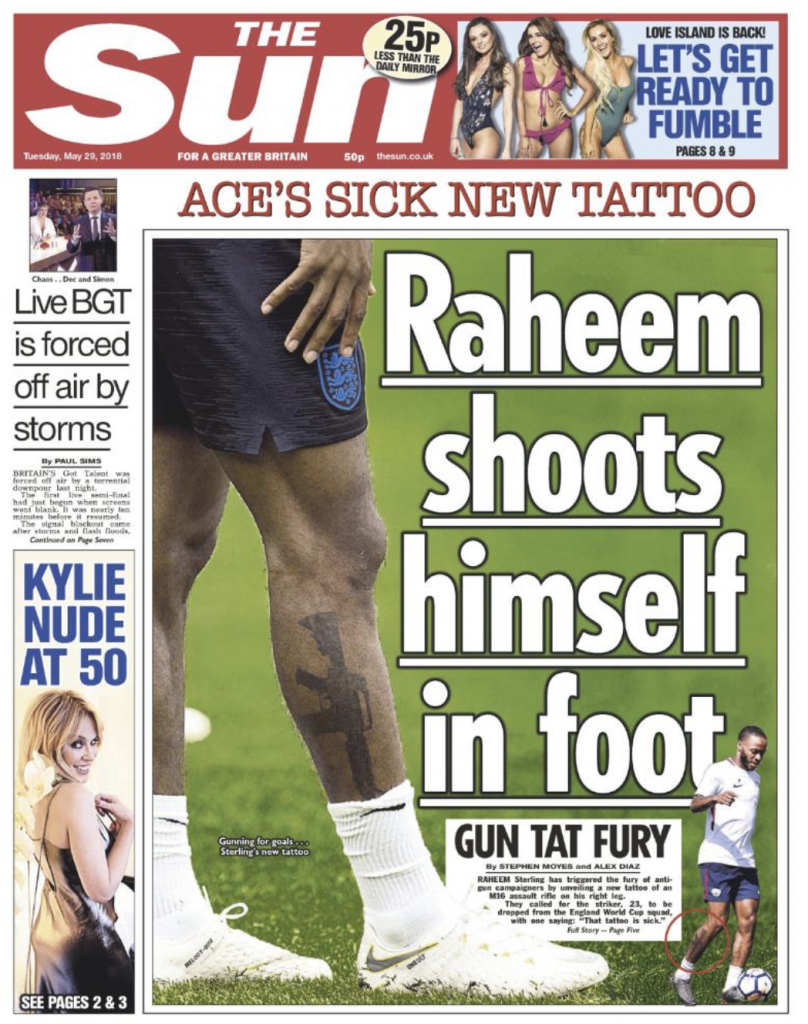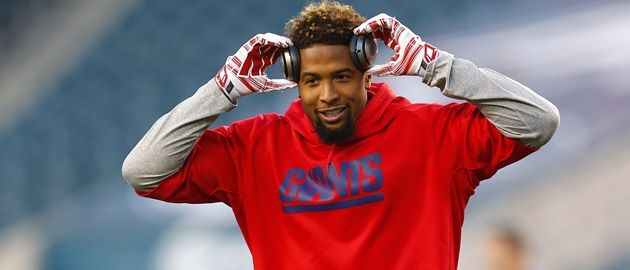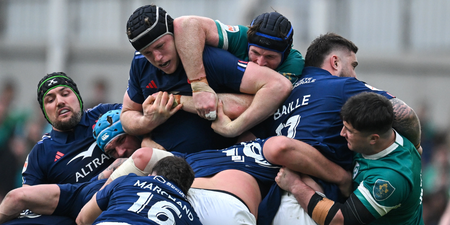‘If they don’t have a story these days, they’ll make one’.
Sometimes as a writer you never really quite know where to start with a particular story but Drake lyrics usually aren’t at the top of the list for how to set a scene.
The Canadian rapper has become one of the biggest stars in music this decade, and he is no stranger to tabloid attention after a string of high profile relationships, but he generally adheres to the ’72 hour rule’.
During his sit down interview with Zane Lowe in 2016, Drake mentioned the ’72 hour rule’ where he controls his emotions for the first 72 hours after something potentially damaging happens, until:
‘Someone else will have done something stupid enough that everyone will forget’.
England international Raheem Sterling has generally operated under similar precepts as a professional footballer but he broke the ’72 hour rule’ when he reacted to The Sun’s main story on their front page on Tuesday morning which suggested that Sterling shot himself in the foot by getting a tattoo of a rifle on his right leg.

The Sun highlighted how the tattoo had ‘sparked fury’ and drawn criticism from anti-gun campaigners, with some of them calling for the winger to be withdrawn from England’s World Cup squad as a result.
Sterling subsequently took to his Instagram account to clarify that he had proceeded with the tattoo as a reminder of how he had promised never to touch guns following the death of his father, who died after being shot when the England winger was just a toddler.
Of course, it’s not the first time a personal decision by Sterling has been highlighted by a national British publication with content lead. Adam Keyworth highlighted a comprehensive collection of tabloid coverage of Sterling.
National news stories concerning the player include:
- Him being tired at 3am
- His greed for wanting a pay rise when he was at Liverpool
- How he allegedly insulted England football fans by posting a picture of a new sink at his house after England had been eliminated from Euro 2016
- Flying with budget airline EasyJet
- Flying on a private jet
- Shopping at British variety store Poundland
- Eating at bakery chain Greggs
- Buying clothes from Penneys
- His dirty Mercedes
- The accumulated cost of his cars
- Where he was branded a ‘love rat’ for proposing to his ‘long suffering’ girlfriend
- Where he treated himself to breakfast after Manchester City teammate Leroy Sané won the PFA Young Player of the Year award, as opposed to the alternative of abstaining from eating food in protest.
https://twitter.com/adamkeyworth/status/1001218545588502530
When you become a national news story for where you eat your food and for where you buy your clothes, a tattoo of an assault rifle on your leg was always going to attract attention, regardless of how personal that tattoo may be to the individual.
Playing professional sport, especially to the level that Raheem Sterling plays with Manchester City and England, is going to make him a subject of national interest but the subjects for which he is being reported says a lot more about the publications that cover him than it does about the player himself.
Sterling is not the first athlete to be covered in such a fashion but to assert that a player is glamourising gun violence for getting a rifle tattooed on his leg, a tattoo which he claims is not yet finished and a tattoo for which he has since explained its rationale, is a big leap to make. Dropping him from the England squad for this reason is an even bigger leap and utterly pathetic.
There are calls for Raheem Sterling to step down from England's World Cup squad following his decision to have a gun tattooed on his leg. Which side are you on? pic.twitter.com/thN3YekOiY
— Good Morning Britain (@GMB) May 29, 2018
But the gun tattoo is just a specific example of long running vilification of a player that publications can use to feed into a wider psyche.
What’s interesting about Keyworth’s widely circulated thread is the two most popular responses to his collation of coverage around Sterling.
https://twitter.com/yorkmark1/status/1001248075967598597
https://twitter.com/colken16/status/1001262355349729280
https://twitter.com/yorkmark1/status/1001277536955961346
Athletes in US sports do speak out and Colin Kaepernick is no longer an NFL player because of his decision to speak out, or more pertinently, to kneel during the American national anthem to protest racial injustices and police brutality.
America has a complicated relationship with its portrayal of black athletes but a lot of parallels can be drawn between that relationship and what we’re seeing unfolding with Sterling’s situation in England.
Research by Cynthia Frisby, an associate professor of strategic communication in the University of Missouri School of Journalism, has revealed racial stereotyping exists in the way media portray athletes. Frisby found that media stories on African-American athletes in the US focused primarily on criminal actions while stories about white athletes were overwhelmingly positive.
For her study, Frisby examined 155 news articles about male athletes from online and print news sources to determine the theme of each story. The themes identified included crime, domestic violence, training/hard work, moral success or failure, violating rules of the sports league, accomplishments and personal lifestyle.
Frisby found that overall, more stories were written about white athletes (43 percent) than black athletes (39 percent). Frisby also found that more than 66 percent of the crime stories involved black athletes while only 22 percent involved white athletes.
More than 70 percent of domestic violence stories involved black athletes and only 17 percent involved white athletes. Finally, 53 percent of the stories involving black athletes had a negative tone, while only 27 percent of stories about white athletes were negative. Frisby says these statistics point to an existence of stereotyping in the sports media.
“True cultural sensitivity requires the eradication of racial and ethnic stereotyping; thus, journalists and reporters must reflect on how their own unfounded beliefs about race differences in sports likely contribute to the stereotyping of black athletes as engaged in more criminal activity and innately physically gifted yet lacking in intelligence and strong work ethics,” Frisby said.
“Not only does negative media coverage serve to legitimise social power inequalities, but also it is likely to undermine black athletes’ achievements and contribute to stereotype threat.”
How much of that applies to Sterling? How many stories concerning him are written in a negative tone and how many will be written in a negative tone when England inevitably crash out of the World Cup on penalties at some stage this summer?
The gun tattoo may be considered as ill-advised in the lead up to a World Cup but is it really worse for society than systematic and systemic negative coverage of a 23-year-old who is often reported on for the most mundane and unremarkable acts? More so than the actual remarkable acts he’s performed on the pitch?
There are bigger issues at play here than what Raheem Sterling gets tattooed on his leg. Like, what state is his car in today? Where will he eat in Russia?
And maybe most importantly, when will this nonsense end?



















































